Early development
After their first encounters with the Soviet KV-1s and T-34s, the German Army was poised to revise its tank design and take immediate action to bolster their firepower and protection. On one hand, they up-gunned the Panzer IV, which became the staple of the German tank forces, and, on the other, rearmed the StuG III as a tank-hunter. They also converted several other chassis into this role, and pressed many new specialized models into action. This had some effects on Allied forces, and in particular the US Army Corps, which sought about using a standard tracked chassis to create a proper tank hunter of their own. Until then, one of the vehicles used as such was the T12 GMC, a conversion of the M3 half-track with a shielded M1897A4 75 mm (2.95 in) gun. It lacked protection, mobility and had the limitations of a SPG. The only purpose-built vehicle in service then was the M6 GMC, a Ford truck with a standard 37 mm (1.46 in) gun mounted on the rear bay. 5380 were built in 1942, but this was not a success, and it was considered obsolete by 1943. In 1942, the head of staff was actively searching for a fully tracked tank hunter, using the M4 chassis.Doctrine
A tracked tank-hunter was already improvised and tested on the M3 Lee chassis, and a later conversion of this vehicle became the 105 mm Howitzer Motor Carriage M7, better known as the “Priest”. For the ordnance top brass, thinking of maintenance, shipping and training, using the M4 chassis for a tank hunter was not only feasible, but also highly desirable. The biggest supporter of this concept was General Lesley McNair, head of the ground forces. This also led to the creation of the Tank Destroyer Force, a dedicated reserved unit embracing a new doctrine. These tanks were held in reserve until any enemy tank breakthrough, and were deployed quickly, using fast maneuvers and firepower to destroy the opposing vehicles. This resulted in putting emphasis on speed and firepower, with some sacrifice in protection.Design of the M10 GMC
Based on these requirements, the first prototype was based on the M3 chassis, and later the production was swapped to the M4 standardized chassis. By these means, every component of the drivetrain, complete with bogies with VVSS, roadwheels, idlers and drive sprockets, return rollers and tracks, and the internal arrangement, were kept. The engine was specific to this vehicle, made of twin GM 6-71s diesels mated on a common crankshaft and specific transmission, and the armor and turret were completely new. The prototype 3-inch Gun Motor Carriage T35 was given a standard 3-inch (76.2 mm) M7 gun and a circular open-top turret already produced for the early production M4A1 (later replaced by conventional turrets on these). The second prototype, T35E1, used the M4A2 chassis and had a new pentagonal turret with flat, sloped sides, frontal beak and inverted rear slope. The mantlet was then wrapped around this “beak”. The sides received well-sloped flat armor plates with a “>” section, held in place, like the turret plates, by massive nuts. Various handles were welded on these for fastening external storage. Due to the lightness of the turret and the frontal weight of the gun, two large counterweights were added to the rear basket. A secondary cal.50 (12.7 mm) machine-gun was mounted on top, both for AA and ground defense. The prototype was further refined and ended as the 3-inch Gun Motor Carriage M10, earning the go for production in mid-1942. The M3 gun fired M79 AP shots that could penetrate 3 inches (76 mm) of 30° sloped armor at 1,000 yards (915 m). The Armor Piercing Capped Ballistic Cap (APCBC) M62 was introduced later, as well as the High Velocity Armor Piercing (HVAP) M93 shot and Armor Piercing High Explosive (APHE) shells. The vehicle could carry 54 rounds. However, this naval-derived round had a small charge, lacked initial velocity and often failed to penetrate standard 50-70 mm (1.97-2.76 in) armor.Production, operators and variants
Production was assumed at General Motors Fisher Tank Arsenal in Grand Blanc, Michigan (4,993 M10s and 375 M10A1s from September 1942 to December 1943). Ford plants produced 1,028 vehicles of the M10A1 variant (October 1942 – September 1943), and Fisher produced a further 300 turretless M10A1s used as artillery tractors, later converted as M36 Jacksons. Total units built reached 6,706 in December 1943.The M10A1
The 1700 M10A1s received a gasoline Ford GAA engine, and were based on the M4A3 chassis. The last 300 vehicles received the new M1 76 mm (3 in) gun, which had better muzzle velocity and could fire heavier ammunition. By 1944 the M10 had started to lose the edge against the Panthers and Tigers, until HVAP rounds were supplied, and even then they had to find weak points and maneuver around the German tanks to be effective.Full-Track Prime Mover M35
Turretless M10A1s built by Fischer were used as artillery tractors, and improvised APCs for the gun crews. 300 were delivered in total by the end of 1943.Chinese M10 Self-Propelled Howitzers
Some M10s, which had been previously demilitarized, were transferred to Republican China (ROC). In 1949 one was rearmed with a modified former Japanese 105 mm (4.13 in) howitzer. It was also fitted with a light, armored permanent turret roof dotted with observation hatches, and an access door. A machine gun port was also made into the bow hull. This successful conversion was followed by sixteen others.In British service
Several hundred were pressed into British service under Lend-Lease, called (Gun) 3 inch Self Propelled (3 in SP). These were assimilated as SPGs, operated by Royal Artillery units, and saw service in 1944 in Italy and France (especially with the Canadians and Poles). Tactical organization was four-battery regiments, with some alternating two towed 17-pdr batteries and two 3in SP batteries, later rearmed with the famed 17 pounder (76.2 mm/3 in) gun. These conversions, into the new 17pdr SP “Achilles” tank hunter, rose to about 1100 machines, done by the Royal Arsenal at Woolwich. It was, in mid-1944, the second most common British/Commonwealth tank hunter after the Firefly. Sub-types were the Diesel/Gasoline powered Ic and IIc. The Canadians also derived a single prototype of their Ram tank into a M10 configuration in 1942, as the 3in SP Wolverine, for a projected production. Some were later used by the Israeli in the 1956 and 1967 wars.In Russian service
The Red Army received only 54 M10s, but their action is unrecorded, as well as the crew opinions on these. There is no doubt that the open-top turret was not appreciated in winter, and both the lack of protection and firepower did not contribute to their popularity.In Free French service
The 1st Free French Army led by General De Lattre received dozens of M10s, operated in similar lines as US tank hunter units. They soldiered well from the French Riviera until the liberation of Paris in August 1944, when a single M10 named “Sirocco” disabled a Panther in Place de la Concorde. They also saw action on the French-German border around Strasbourg and in southern Germany, and Indochina after the war.The Wolverine in action
In US service, the first engagements came in early 1943, in Tunisia. Although in short supply, they proved quite up to the task against any German tanks, including the latest evolution of the Panzer IV. On flat, they were fast enough and able to maneuver around enemy tanks with ease. Their open-top turret was a problem in specific urban and heavily forested environments, and also because of shrapnel and grenades. But the crews loved it anyway, because observation was easier, both to spot enemy tanks and to fire, they could communicate more easily with the infantry, and in case their tank was disabled, they could escape quite quickly, compared to the Sherman and other Allied tanks. There was a waterproof canvas, which could be deployed above this open space. In general, the open-top turret was not seen as a problem since US Army doctrine of use in close support included infantry walking alongside the vehicles to counter enemy infantry tactics. However, by mid-1944, their speed was not sufficient anymore, nor the firepower. The 90 mm (3.54 in) armed M36 Jackson began to supplement tank hunter units, as well as the M18 Hellcat, which was designed on a lightweight chassis with brand new suspensions and drivetrain, procuring speeds unheard of for a tank in the US military -at least since the famous 1930 Christie. Both models made their presence well felt throughout 1944, but the M10s were kept in service well into 1945, although after Normandy their gun proved to be unable to harm the Tiger or Panther, until new HVAP rounds were more largely provided. The British Achilles 17 pdr conversion was, in this way, quite successful. Two-tanks batteries of these were often seconded to British tank brigades equipped with Churchill tanks.The crews also began to protect their tanks by any means, including everything they could carry fastened outside in canvas bags, supplementary racks, and then piling sandbags on the front slope and bulks of timber on the sides. This was particularly apparent by the end of 1944 and the battle of the Bulge, when the German Panzerschreck and Panzerfaust teams began to take a toll. Already in Normandy, the threat of bocage ambushes urged the crews to improvise armored rooftops with panels cut out from enemy tanks. There was an anecdote about a 86th Anti-Tank Regiment (XII Corps) British tank which had its turret crew killed and replaced three times, but the driver and tank itself remained safe. Another flaw noted in close quarter combat was the slow turning rate of the turret, which was hand-cranked. It needed a staggering two minutes to rotate a full 360 degrees. The tank hunter was conceived for open spaces, to maneuver faster than the enemy tanks, and like a SPG, the tank itself was brought to bear at the same time as the turret was turned. It was still better than most German tank hunters, which were pure SPGs with limited traverse. The Browning cal.50 (12.7 mm) also proved a solution to “clean-up” the surroundings in close quarters. In general, the statistics showed that the M10 spent many more HE rounds than AP ones, indicating they were more usually used in tank roles, rather than as pure tank hunters.
By the end of 1944, some M10s were transferred to the Pacific theater. Their firepower was more than adequate against any IJN tanks, but they proved disadvantaged in wooded areas due to their open-top turret, because of the Japanese practice to have hidden snipers in top trees, and close combat suicidal antitank Japanese infantry tactics.
US wartime propaganda movie about the M10 GMC
I do not own the rights nor soundtrack of this video, which is displayed solely for educational purposes.
Links about the M10 tank hunter
The M10 Wolverine on WikipediaM10 GMC specifications | |
| Dimensions (L-w-h) | 14.3x 7.5x 8.8 ft (4.4x 2.3x 2.7 m) |
| Total weight, battle ready | 29.6 metric tons (65,000 lbs) |
| Crew | 4 (driver, commander, gunner, loader) |
| Propulsion | General Motors 6046 diesel, 375 hp (276 kW), 12.5 hp/t |
| Suspensions | VVSS (Vertical Volute Spring Suspensions) |
| Top speed (flat) | 32 mph (51 kph) |
| Range | 186 mi (300 km) |
| Armament | Main: 3″ (76.2 mm) Gun M7, 54 rounds Secondary: Cal.50 (12.7 mm) Browning M2HB, 300 rounds |
| Armor | From 0.3 to 2.3 in (9 to 57.2 mm) |
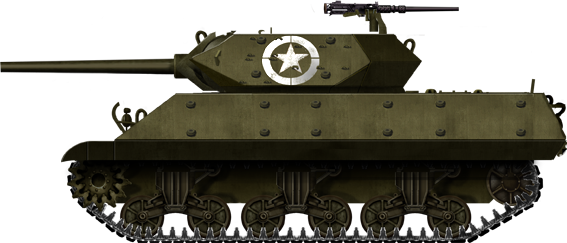
Early M10, as delivered in late 1942, training in the USA.
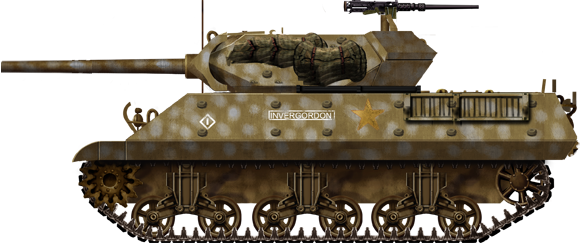
M10 3in GMC from the 776th Tank Destroyer Battalion, Tunisia, March 1943.
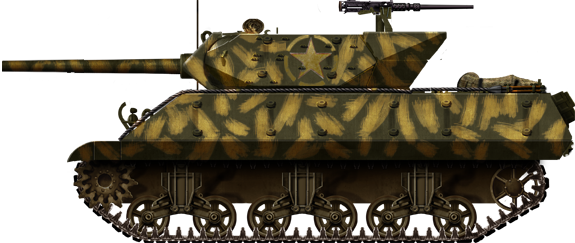
M10 GMC, Tunisia, April 1943. Notice the counterweight and improvised camouflage, made of sand glued with a brush.
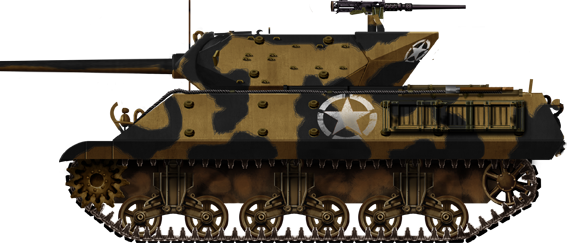
M10 GMC from the 636th Tank Destroyer Battalion, Salerno, September 1943.
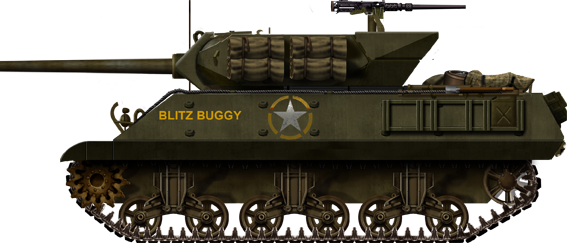
M10 “Blitz Buggy” from the 654th Tank Destroyer Battalion in Italy, October 1943.

(Gun) 3 inch Self Propelled, unknown British artillery unit, Italy, mid-1944.
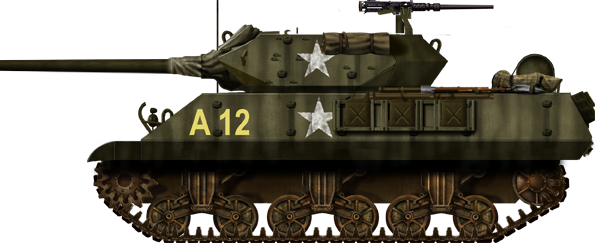
M10 GMC in Sicily, fall 1944.
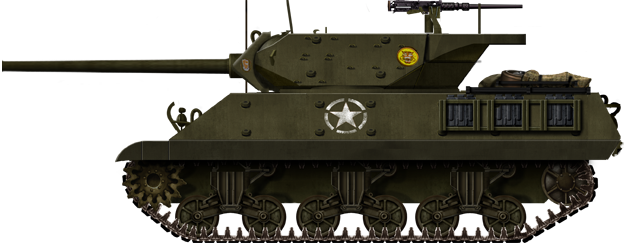
M10A1 Wolverine, Normandy, summer 1944.

M10A1, winter 1944 – Credits: E. Boldyrev, battlefield.ru .

Free French M10 Wolverine “Sirocco”, 2nd DB, taking part in the liberation of Paris, August 1944.

Soviet M10 GMC, Northern Front, summer 1944.
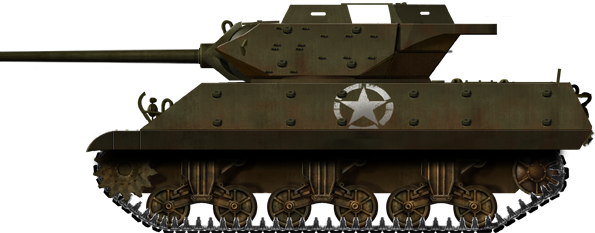
M10A1, late production version, unknown unit, France, summer 1944. Notice the extra armored panels on top.

British 17pdr SP Achilles Ic, Italy, 1944.

WW2 Tanks




























WW2 tanks posters

All Tiger tanks liveries.

Panther liveries and variants

WW2 Armour - All tanks











Tanks aces and single tanks series

Find more there

Museums, Movies, Books & Games
The Tanks and Armor in pop culture
Tanks and armored vehicles in general are only really grasped when seen first person: The mass, the scale, it's all there. Explore also the way tanks were covered in the movie industry, in books and in video games.Movies:
Best tanks movie on warhistoryonline.com
On imdb.com
On bestsimilar.com/
miltours.com
liveabout.com/
watchmojo.com
Video Games:
pcgamesn.com
historyhit.com
levvvel.com
vg247.com/best-tank-games
mmobomb.com/
alienwarearena.com

